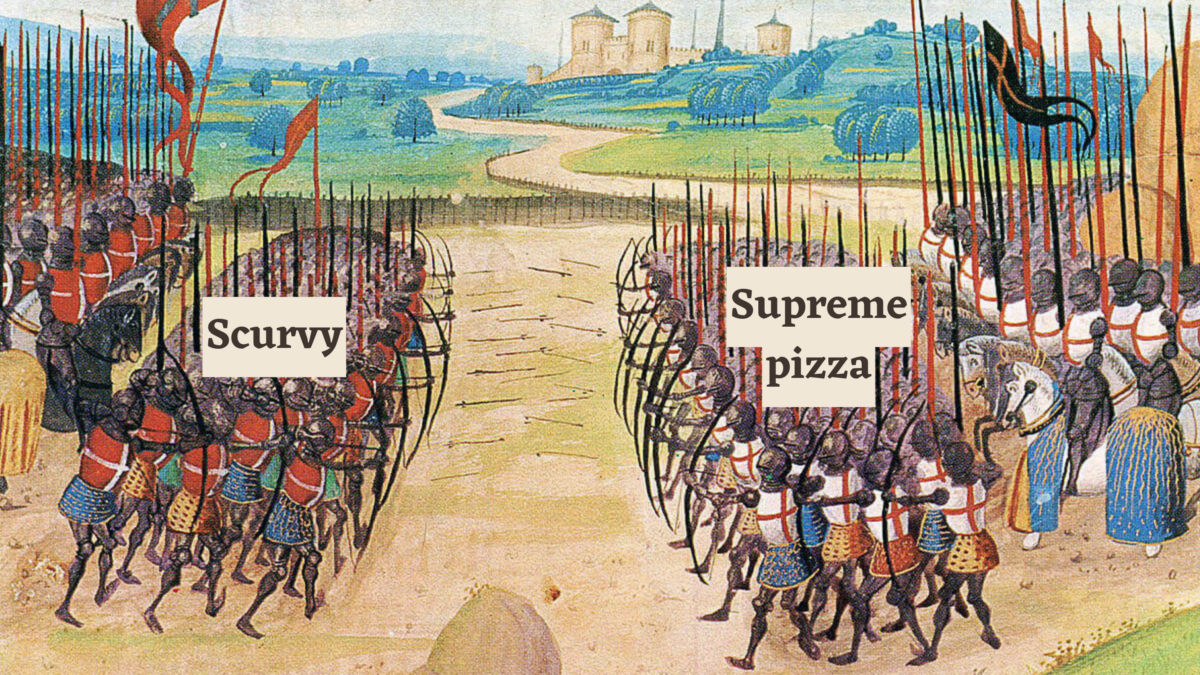Disclaimer: This is not health or nutrition advice. The team at Woroni are not medical practitioners If you have health concerns please visit a GP.
Hearing the word scurvy may bring to mind images of pirates, sailors, and mediaeval times. But scurvy isn’t as far away as we might think.
A recent study found that the prevalence of Vitamin C deficiency globally includes 73.9 percent of people in northern India as well as 7.1 percent of people in the United States. Vitamin C deficiency occurs at an even greater rate in low-socioeconomic populations. This includes students, two thirds of whom live below the poverty line.
If we apply the United States statistics to the ANU population of 22,000 we would expect a Vitamin C deficiency in 1,562 students.
Woroni has learned of a number of confirmed cases of scurvy here at the ANU.
An ANU student who was previously diagnosed with scurvy spoke to Woroni about their experience. They described the symptoms as “really unpleasant, I felt very weak and sickly.” They experienced unexplained bruising, rashes, fatigue and wobbly teeth as well as severe light sensitivity making it difficult to study and look at screens. Due to the link between Vitamin C and Iron uptake, they also became extremely anaemic (severe iron deficiency), resulting in headaches and fainting spells.
When asked how they found out they had scurvy, the student detailed an extensive doctor’s visit and blood tests, which identified severe Vitamin C deficiency and anaemia. This led to a diagnosis of scurvy. The doctor then prescribed ascorbic acid and Vitamin C supplements, and they began to recover within a couple of days. However, it took a month and a half to get rid of all the symptoms. So the question on everyone’s lips is:
How did you get scurvy?
This student explained that at the time they lived at a catered residential college and were vegetarian. However, the vegetarian options offered at this hall were “awful” and so they resorted to primarily eating rice and salad, which “completely ruined [their] dietary health.”
This story is not the only instance of scurvy at ANU.
In fact, a rumour straight from the B&G kitchen states that on a diet of Weetbix, vegemite sandwiches, and pesto pasta, students can prevent scurvy with two slices of Dominos Supreme pizza a month.
Woroni set out to find out if this is true.
Sitting down with Dr Stacey Ward, a lecturer at the ANU School of Biological Anthropology, we learned about scurvy, the signs and symptoms, the long term consequences, and most importantly, if two slices of Supreme pizza a month keeps scurvy at bay.
So what is scurvy?
Scurvy results from severe Vitamin C deficiency. Vitamin C is an antioxidant which is important for collagen production and maintenance of the body’s connective tissues. It’s vital for wound healing, dentition, bone formation and making neurotransmitters.
What are the symptoms of scurvy?
Scurvy can begin subtly with feelings of fatigue, grumpiness and sadness, as well as extra bruising or aching, and bleeding gums. The long term consequences of scurvy can include haemorrhaging, connective tissue failure, heart attack and death. Scurvy can also co-occur with other deficiencies including Iron and Vitamin D.
How can you ensure you don’t get scurvy?
Vitamin C is not made by the body and thus, has to be supplemented through diet. Vitamin C is contained in a range of fruits and vegetables, in particular leafy greens, parsley, brussel sprouts and citrus. The daily Vitamin C requirement is 75mg for women and 100mg for men. What this looks like in food is approximately one glass of orange juice a day.
How quickly can you recover from scurvy?
Recovery is quick! You can feel better in two days and fully recover in two weeks after adding back Vitamin C to your diet.
How does the typical university diet fare? And is two slices of supreme pizza enough?
We found that there is no Vitamin C in Weetbix, oatmeal, vegemite, bread, two-minute noodles or pasta. Pesto contains 0.7mg of Vitamin C per 16g. This diet would sit well below the needed daily intake.
We did our best to find Dominos Supreme pizza nutritional facts but were only able to find information from Pizza Hut. Pizza Hut Supreme pizza has 0.7mg of Vitamin C per slice giving 1.4mg in two pieces.
We can safely say that this myth is busted. Two slices of Supreme pizza a day wouldn’t meet the daily Vitamin C requirements, let alone two slices a month. Catch more campus news with Woroni, and get yourself some Vitamin C!
We acknowledge the Ngunnawal and Ngambri people, who are the Traditional Custodians of the land on which Woroni, Woroni Radio and Woroni TV are created, edited, published, printed and distributed. We pay our respects to Elders past and present. We acknowledge that the name Woroni was taken from the Wadi Wadi Nation without permission, and we are striving to do better for future reconciliation.
